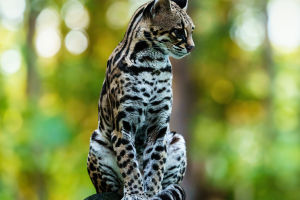Ever watch a butterfly flutter by and wonder about its journey? From a tiny egg to the beautiful insect we admire, the life of a butterfly is a true miracle of nature.
If you've ever been curious about how this graceful creature comes to life, you're in for an exciting adventure. Let's dive into the four main stages of a butterfly's life cycle and see how each one plays a crucial role in its transformation.
Stage 1: The Egg
It all begins with a tiny egg. Depending on the butterfly species, eggs are laid on specific plants that the larvae (caterpillars) will later feed on. This is a strategic move by the butterfly to ensure that its young have a steady supply of food once they hatch.
Once the egg is laid, it's carefully positioned on the underside of leaves or in a protected spot. The egg is small, round, and can vary in color, from pale yellow to green or even brown, depending on the butterfly species. The egg stays there for about 3 to 5 days before the next stage begins.
Stage 2: The Larva (Caterpillar)
The egg hatches, and out comes the larvae, also known as a caterpillar. At this stage, the caterpillar's main job is to eat, eat, and eat! It will spend most of its time munching on the leaves of the plant it was born on. The caterpillar's sole focus is to grow as large as possible because it needs a lot of energy for the next stage.
As it feeds, the caterpillar undergoes a series of molts, shedding its skin several times. Each time it molts, it grows larger. This growth phase can last anywhere from a few weeks to a couple of months, depending on the species and the availability of food. During this time, you may notice the caterpillar becoming fatter and longer, preparing for its next big change.
Stage 3: The Pupa (Chrysalis)
Once the caterpillar has grown large enough, it's time for the next step: the pupa stage. This is where the magic really happens. The caterpillar finds a safe spot, attaches itself to a branch or leaf, and sheds its skin one last time. Underneath, it forms a hard outer shell called a chrysalis or cocoon.
Inside the chrysalis, the caterpillar is going through a fascinating transformation. This process, known as metamorphosis, is when the caterpillar changes into an mature butterfly. It may seem like nothing is happening from the outside, but inside, the caterpillar's body is being completely restructured. This stage can last anywhere from 7 to 21 days, depending on environmental factors like temperature.
Stage 4: The Mature Butterfly
Finally, the moment we've all been waiting for: the mature butterfly emerges from its chrysalis. At first, the butterfly's wings are soft, wet, and crumpled. It will need some time to let its wings dry out and expand before it can take flight. During this time, the butterfly will hang upside down, pumping fluid into its wings to help them harden.
Once its wings are fully dry, the butterfly is ready to fly off in search of food and a mate. The butterfly's primary focus now is reproduction. After mating, the female will lay eggs, and the cycle begins again. The mature butterfly usually lives for 2 to 4 weeks, but some species live longer depending on the environment and food supply.
Why the Life Cycle Matters?
Each stage of the butterfly's life cycle serves a specific purpose, and the entire process is finely tuned by nature. The egg, larva, pupa, and mature stages all contribute to the butterfly's survival and reproduction.
1. The egg ensures the species continues by allowing the next generation to hatch.
2. The caterpillar plays the crucial role of feeding and growing, preparing for metamorphosis.
3. The chrysalis is where the real transformation happens, turning a caterpillar into an mature butterfly.
4. The butterfly then carries out the job of spreading pollen, helping plants reproduce, and completing the cycle by laying eggs.
This incredible transformation from egg to mature is not just a biological wonder; it's a process that has taken millions of years to evolve into its current form. The butterfly's life cycle reminds us of the delicate balance that exists in nature, where each phase is essential for the next.
Final Thoughts
The life cycle of a butterfly is one of nature's most inspiring transformations. From the tiny egg to the delicate fully-grown butterfly, each stage plays a vital role in ensuring the species' survival and reproduction. Watching a butterfly emerge from its chrysalis and take flight is a reminder of how beautiful and intricate nature can be. So, next time you spot a butterfly, take a moment to appreciate the amazing journey it has taken to become the graceful creature you see.


